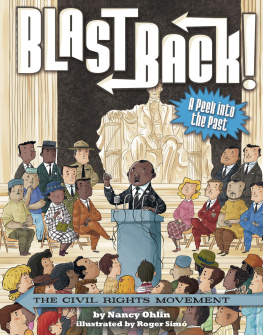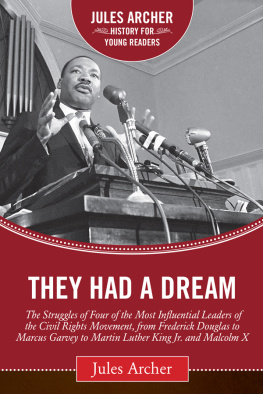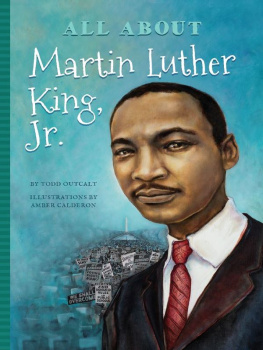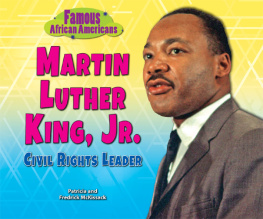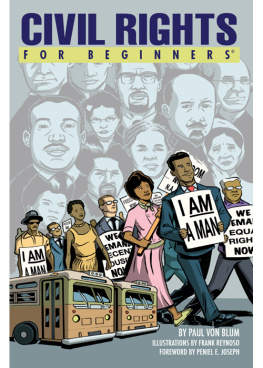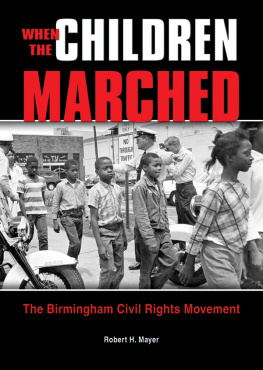Studies in United States Culture
Grace Elizabeth Hale, series editor
SERIES EDITORIAL BOARD
Sara Blair, University of Michigan
Janet Davis, University of Texas at Austin
Matthew Guterl, Brown University
Franny Nudelman, Carleton University
Leigh Raiford, University of California, Berkeley
Bryant Simon, Temple University
Studies in United States Culture publishes provocative books that explore U.S. culture in its many forms and spheres of influence. Bringing together big ideas, brisk prose, bold storytelling, and sophisticated analysis, books published in the series serve as an intellectual meeting ground where scholars from different disciplinary and methodological perspectives can build common lines of inquiry around matters such as race, ethnicity, gender, sexuality, power, and empire in an American context.
2020 Justin Gomer
All rights reserved
Set in Charis by Westchester Publishing Services
Manufactured in the United States of America
The University of North Carolina Press has been a member of the Green Press Initiative since 2003.
Library of Congress Cataloging-in-Publication Data
Names: Gomer, Justin, author.
Title: White balance : how Hollywood shaped colorblind ideology and undermined civil rights / Justin Gomer.
Other titles: Studies in United States culture.
Description: Chapel Hill : University of North Carolina Press, 2020. | Series: Studies in United States culture | Includes bibliographical references and index.
Identifiers: LCCN 2019057955 | ISBN 9781469655796 (cloth) | ISBN 9781469655802 (paperback) | ISBN 9781469655819 (ebk)
Subjects: LCSH: Post-racialismUnited States. | Racism in popular cultureUnited States. | Motion picture industryUnited StatesHistory20th century. | Stereotypes (Social psychology) in motion pictures. | United StatesRace relationsHistory20th century.
Classification: LCC PN1995.9.N4 G66 2020 | DDC 791.43/6552dc23 LC record available at https://lccn.loc.gov/2019057955
Acknowledgments
To say it took a village to complete this book is to drastically understate the amount of mentorship, love, and support I required during the years it took to write it. This book began on the sixth floor of Barrows Hall, in the African American Studies Department at the University of California, Berkeley. There, Leigh Raifordmy mentor, undergraduate thesis adviser, dissertation chair, and Jedi masterencouraged me to pursue a PhD in African American studies before I had even considered it. She then spent the better part of a decade helping me develop the critical-thinking skills, writing and research tools, and habits of mind required to have a shot at a career in academia. Similarly, Ula Taylor sees a better scholar in me than I ever will. Shes invested far more time in my development and in this project than I deserve, but which Ive shamelessly taken. To this day, the question, What would Leigh and Ula think? informs my research and writing. Additionally, Michael Cohen was a consistent sounding board for this projects argument, scope, and analysis. In many ways, the pages that follow are an earnest but woefully inadequate attempt to repay the debt I owe Leigh, Ula, and Michael. Whatever scholarly contributions this book contains are a testament to their generosity, mentorship, and brilliance. The books shortcomings, on the other hand, are my own. My people taught me better, I assure you.
Leigh, Ula, and Michael are just three members of the community of scholars that cultivate and nourish the academic community on the sixth floor of Barrows. That so many people on the sixth floor are better human beings than they are scholars is as hard to fathom as it is true. I had the privilege of attending graduate school with some of the most gifted young minds in my field. I benefited greatly from the company of Ron Williams II, Shaun Ossei-Owusu, Petra Rivera-Rideau, Ryan Rideau, Jasmine Johnson, Ianna Owen, Christopher Petrella, Mario Nisbett, Ameer Loggins, Jasminder Kaur, and Reggie Royston. Moreover, the sixth floors graduate adviser, Lindsey Villarreal, supported my family whenever life got in the way of graduate school. She found us money when we couldnt make ends meet and never faltered in her faith in my academic journey. My thanks also to Darieck Scott, Brandi Wilkins-Catanese, and Percy Hintzen for their support.
Outside the sixth floor, Scott Saul is an invaluable mentor and was fundamental to this project from its conception to its completion. Collectively, the brain trust of this bookLeigh, Ula, Michael, Scott, and mefeels like the academic equivalent of the 2017 Golden State Warriors. I am not sure who is Stephen Curry, Klay Thompson, Kevin Durant, or Draymond Green in this analogy, but I am certain that I am Zaza Pachulia.
Kathleen Moran, the associate director of UC Berkeleys American Studies Program, kept a roof over my familys head and dinner on our table for most of my seven years in graduate school and two more thereafter. More importantly, she, along with Michael Cohen and Christine Palmer, taught me how to teach.
Outside UC Berkeley, Im fortunate to participate in a writing group with Erica Ball, Sharla Fett, and Tyler D. Parry. Erica, Sharla, and Tyler read drafts and offered detailed feedback on most of the chapters in this book. Im not quite sure why they, all far more accomplished than I, asked me to join them, but Ill continue to draw the lions share of the groups benefit as long as I am allowed to stay.
Im very lucky to work in the American Studies Program at California State University, Long Beach. My director, Brett Mizelle, made sure my transition from graduate school to assistant professor was a smooth one. I admire the culture he has built in our program, one rooted in kindness and collegiality and grounded in academic rigor. In addition, my CSULB American Studies colleagues Preeti Sharma, Linda Maram, Charlie Ponce de Leon, Brande Jackson, and Larry Hashima are all examples of the professoriat at its best.
At UNC Press, Brandon Proia is as good an editor as an author could ask for. I am grateful for his expertise and unwavering faith in this project. I am honored that this book is part of UNC Presss illustrious list and grateful to the rest of the UNC Press team.
Finally, my family. My parents, Elaine and Bob Gomer, worked too hard in jobs they didnt like for too many years so that I wouldnt have to. Moreover, they made sure that their unconditional love was so ubiquitous that their children could not help but take it for granted. My brother, Bryant, and my sister, Kelly, are better testaments to my parents selflessness than I am. I relied greatly on their love and friendship as a child, and I continue to do so to this day. My siblings-in-lawLauren, Todd, and Conorhave each found ways to add love and happiness to an extended Gomer family that I doubted could take any more.


